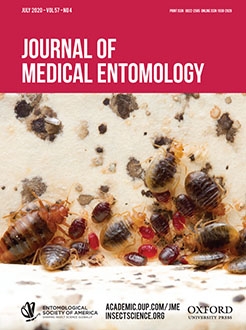Given current and projected changes in the climate, the composition of mosquito species is predicted to shift geographically with implications for the transmission dynamics of vector-borne pathogens. Many mosquito species are rarely collected in Canada and their history is poorly understood; thus assessing their potential role as vectors for pathogenesis is difficult. Mosquitoes were collected from four trapping sites in Quebec Province, Canada, from June to September during 2018 and 2019 using BG sentinel traps. From all morphologically identified female mosquitoes, at least one specimen was selected for identification confirmation using the DNA-barcoding technique. Sequences were subjected to alignment and a Neighbor-Joining (NJ) tree was created using Geneious software. In total, 2,752 female mosquitoes belonging to 20 species over five genera: including Aedes (Ae.), Anopheles (An.), Culex (Cx.), Culiseta (Cu.), Coquillettidia (Cq.) were collected. The predominant mosquito was found to be Ae. cinereus. The highest number of mosquito species was captured in July, followed by August, September, and then June. Five genera were characterized by a distinctive set of cytochrome oxidase I (COI) sequences that formed well-supported clusters in the NJ-tree. The presence of Ae. japonicus in Quebec provides an initial look at the distribution of mosquito species in eastern Canada, which may put Canadians at risk of a wider range of arboviruses.
How to translate text using browser tools
13 February 2020
Mosquito Species Composition and Abundance in Quebec, Eastern Canada
Nariman Shahhosseini,
Gary Wong,
Christina Frederick,
Gary P. Kobinger
ACCESS THE FULL ARTICLE
It is not available for individual sale.
This article is only available to subscribers.
It is not available for individual sale.
It is not available for individual sale.

Journal of Medical Entomology
Vol. 57 • No. 4
July 2020
Vol. 57 • No. 4
July 2020
Canada
climate change
mosquito
pathogen
population dynamic




